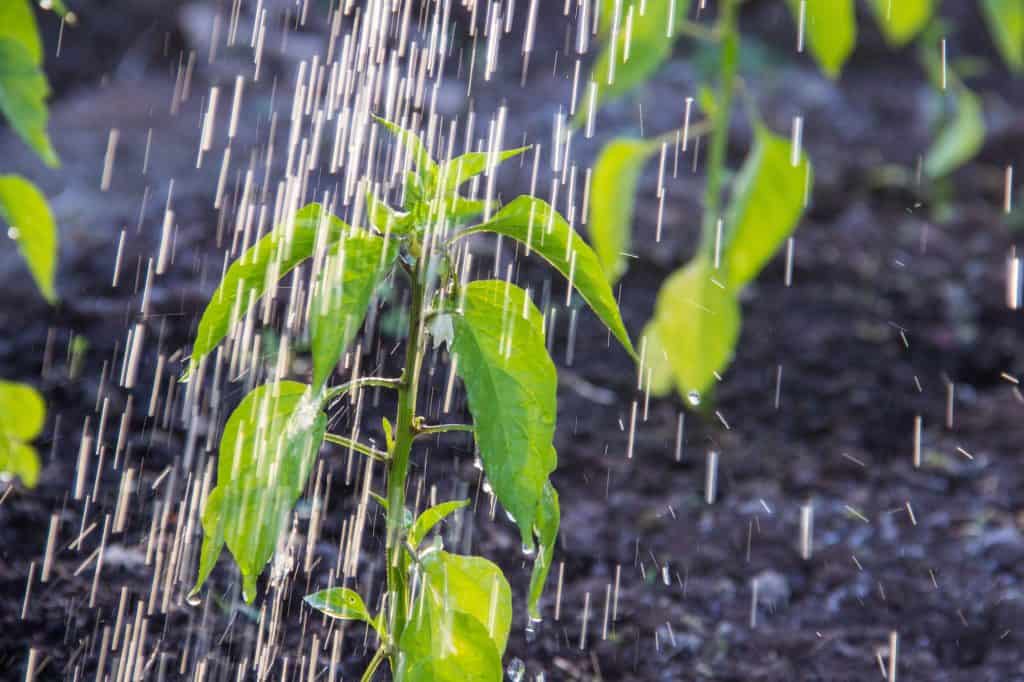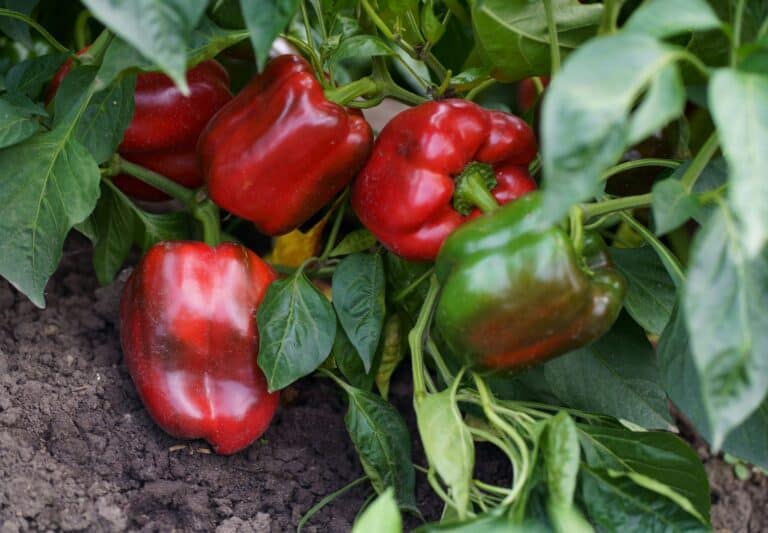Fertilizing Your Peppers: The Grower’s Guide to Peak Performance
Fertilizing pepper plants is crucial for healthy growth and maximizing yields. Peppers, valued for their versatility in global cuisines, require specific nutrients at different growth stages to thrive. This guide covers the essentials of fertilizing peppers, providing detailed information on nutrient requirements, soil preparation, types of fertilizers, and best practices to ensure a successful harvest.

Note: This article contains affiliate links, which means that if you click and purchase, we may earn a small commission at no extra cost to you. Thank you for supporting our content!
Understanding Nutrient Requirements for Pepper Plants
Fertilizers are classified by their N-P-K ratio, representing the percentage of nitrogen (N), phosphorus (P), and potassium (K) in the mix. Each of these primary nutrients plays a vital role in the growth and development of pepper plants:
- Nitrogen (N) is essential for vegetative growth, promoting healthy leaves and stems.
- Phosphorus (P) supports root development and is critical during flowering and fruiting stages.
- Potassium (K) enhances overall plant health, disease resistance, and fruit quality.
For peppers, a balanced N-P-K ratio like 5-10-10 is often recommended. This ratio ensures that the plant receives enough phosphorus and potassium to support fruit production while still providing sufficient nitrogen for vegetative growth.
The Importance of Secondary Nutrients: Calcium and Magnesium
In addition to the primary nutrients, secondary nutrients like calcium and magnesium are essential for pepper plants:
- Calcium is crucial for cell development, leading to strong fruit walls and preventing common issues like blossom end rot, which is often caused by a calcium deficiency.
- Magnesium is a core component of chlorophyll, necessary for photosynthesis. A magnesium deficiency can lead to chlorosis, where leaves turn yellow due to insufficient chlorophyll production.
Ensuring these nutrients are present in the soil is vital for the healthy growth of pepper plants and the production of high-quality fruits.
Soil Testing and Preparation
Before planting or fertilizing pepper plants, conducting a soil test is essential to identify nutrient levels and pH balance. Soil testing can be done using at-home kits for basic analysis or through agricultural services for a more comprehensive report. The results will help determine what nutrients are lacking and guide the appropriate amendments.
Amending Soil Based on Test Results
Based on the soil test results, amendments may be necessary to correct nutrient deficiencies. Common amendments include:
- Nitrogen: Can be added using nitrate-based fertilizers or organic options like blood meal.
- Phosphorus: Bone meal or rock phosphate can increase phosphorus levels.
- Potassium: Potash or wood ash are effective for boosting potassium.
Following the recommendations from the soil test ensures that nutrient imbalances are addressed without over-fertilizing, which can harm plant growth.
Soil pH and Nutrient Availability
Soil pH significantly affects nutrient availability. For pepper plants, the ideal pH range is between 6.5 and 7.5. Within this range, nutrients are most accessible to plants. If the soil pH is too low (acidic) or too high (alkaline), certain nutrients, such as phosphorus, may become less available. Adjusting soil pH through the use of lime (to raise pH) or sulfur (to lower pH) can help maintain the optimal conditions for nutrient uptake.
Types of Fertilizers for Pepper Plants
Choosing the right type of fertilizer is crucial for meeting the nutritional needs of pepper plants throughout their growth stages. Fertilizers are available in various forms, each with its benefits and application methods.
Granular vs. Liquid Fertilizers
- Granular Fertilizers: These are slow-release fertilizers that provide nutrients over time. They are typically mixed into the soil at planting or sprinkled around the base of the plants. Granular fertilizers are convenient for steady, long-term nutrient supply.
- Liquid Fertilizers: These are quickly absorbed by the plant when applied, making them ideal for rapid nutrient delivery. Liquid fertilizers are often diluted with water and can be applied directly to the soil or as a foliar spray. They are particularly useful for addressing nutrient deficiencies promptly.
The choice between granular and liquid fertilizers depends on the specific needs of the plant and the desired speed of nutrient release.
Organic vs. Chemical Fertilizers
- Organic Fertilizers: Derived from natural sources like compost, manure, and bone meal, organic fertilizers release nutrients slowly and improve soil health over time. They are environmentally friendly and promote a sustainable growing environment.
- Chemical Fertilizers: These are synthetic and provide nutrients quickly and in precise amounts. While effective, they can lead to salt buildup in the soil if not used correctly. Chemical fertilizers are often chosen for their immediate impact on plant growth.
Both organic and chemical fertilizers have their place in pepper cultivation. Organic options are better for long-term soil health, while chemical fertilizers offer quick solutions for specific nutrient needs.
Specialized Fertilizers for Different Growth Stages
Pepper plants have varying nutritional needs depending on their growth stage:
- Seedlings: During the early stages, a balanced, half-strength liquid fertilizer is recommended. Fish emulsion is another good option during the seedling stage. This ensures that young plants receive the nutrients they need without the risk of fertilizer burn.
- Vegetative Stage: High-nitrogen fertilizers support leaf and stem growth during this phase. However, it’s important to monitor nitrogen levels to avoid excessive vegetative growth at the expense of fruit production.
- Flowering and Fruiting Stage: As plants transition to flowering and fruiting, a fertilizer higher in phosphorus and potassium and lower in nitrogen is ideal. This promotes strong root development and enhances fruit quality.
Adjusting fertilizer types and ratios according to the growth stage ensures that the plants receive the right nutrients at the right time.
Fertilization Schedule
Establishing a fertilization schedule helps maintain consistent nutrient levels throughout the growing season:
- Seedlings: Apply a balanced liquid fertilizer every two weeks after the first true leaves appear. This supports steady growth until the plants are ready to be transplanted outdoors.
- Mature Plants: Once established, reduce the frequency of fertilization to every 2-3 weeks. For mature plants, a monthly application may be sufficient, depending on the growth and soil conditions.
Monitoring plant health and adjusting the fertilization schedule as needed can prevent over-fertilization, which can lead to nutrient burn, characterized by yellowing and curling leaves.
Advanced Fertilizing Techniques
For more experienced gardeners, advanced fertilizing techniques can further optimize pepper plant growth:
Foliar Feeding
Foliar feeding involves applying nutrients directly to the leaves, allowing for rapid absorption. This method is particularly useful for addressing specific nutrient deficiencies quickly. Organic options like seaweed extract are popular for foliar feeding, as they supply trace elements and growth stimulants while enhancing disease resistance.
Fertigation
Fertigation combines fertilization with irrigation, delivering nutrients directly to the root zone. This technique ensures that nutrients are supplied in the right amounts at the right times, promoting efficient growth and resource use. Fertigation is especially effective for large-scale or commercial pepper production.
Troubleshooting Common Fertilization Issues
Common issues like yellowing leaves, stunted growth, and nutrient imbalances often stem from improper fertilization practices. Addressing these problems typically involves:
Rebalancing Nutrients: Based on soil test results, applying the appropriate fertilizer to correct nutrient deficiencies or imbalances.
Adjusting Soil pH: Ensuring the soil pH is within the optimal range for nutrient availability.
Correcting Over-Fertilization: If over-fertilization is suspected, flushing the soil with water can help remove excess nutrients.
Fertilizing pepper plants is a critical aspect of successful cultivation. By understanding the specific nutrient needs of peppers at each growth stage, testing and preparing the soil, choosing the right type of fertilizer, and establishing a consistent fertilization schedule, gardeners can ensure healthy plants and abundant harvests. Advanced techniques like foliar feeding and fertigation, along with regular monitoring and troubleshooting, further enhance the potential for high-quality pepper production.






